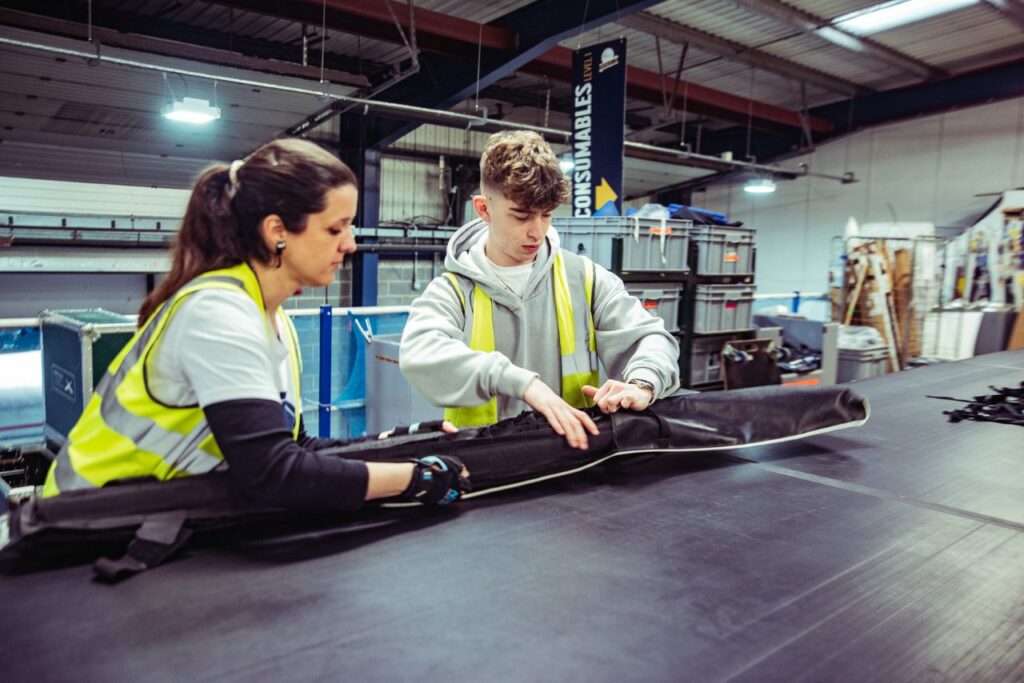Recruitment is no longer just about filling vacancies; it’s about finding, attracting, and retaining the right people who will contribute to your organisation’s long-term success. Since 95% of UK businesses admit to making at least one bad hiring decision every year, an effective recruitment strategy is essential to improving candidate quality, reducing time-to-hire, and even strengthening your employer brand, ensuring your business remains competitive in a challenging labour market.
In this guide, we’ll explore hiring and recruiting strategies, how to develop a recruitment plan, and even provide a recruitment strategy example that you can use when hiring an apprentice.
Why a Recruitment Strategy Matters

An ad-hoc hiring approach often leads to rushed decisions, a poor candidate experience, and high turnover rates. By taking a strategic approach, you can:
- Attract better-qualified candidates – A clear plan helps target your ideal candidate persona and focus your job adverts.
- Reduce hiring costs – Fewer bad hires and reduced turnover mean lower overall recruitment spend.
- Improve diversity and inclusion outcomes – A well-structured process reduces bias and opens opportunities to a wider talent pool.
- Strengthen your employer brand – Consistency in hiring processes creates a positive experience for candidates, even those you don’t hire.
- Build long-term talent pipelines – Developing relationships with potential candidates and schools or colleges ensures a steady flow of applicants in the future.
Without a strategy, you risk inconsistent hiring, lower engagement, and missed opportunities to hire top talent.
Recruitment Best Practices

The most successful organisations follow a set of recruitment best practices to keep hiring efficiently, fairly, and results-driven:
Clearly Define Roles and Responsibilities
Start with a detailed job analysis. Include essential skills, qualifications, reporting lines, and expected outcomes. This ensures candidates understand exactly what success looks like.
Promote Your Employer Brand
Your careers page, social media, and job descriptions should communicate your culture and values. Use employee testimonials, success stories, and images of your workplace to attract like-minded candidates.
Focus on Diversity Recruiting Strategy
Consider where and how you advertise roles to improve diversity recruitment. Engage with community organisations, use inclusive language, and ensure hiring managers receive training in unbiased selection.
Leverage Technology
Applicant tracking systems (ATS) and recruitment CRM tools help you stay organised, communicate with candidates quickly, and track data for future optimisation.
Measure and Refine
Use data to improve decision-making. Key metrics include time-to-fill, cost-per-hire, source of hire, and quality of hire. Regular reviews make your process more effective over time.
What Does a Good Recruitment Process Look Like?

A great recruitment process is structured, transparent, and candidate-focused, helping you attract, assess, and secure the right talent while leaving every applicant with a positive impression.
1) Start with a Clear Needs Analysis
Define the skills, experience, and behaviours your organisation truly needs. Link the role to your wider business goals so you’re hiring with purpose, not just filling a gap.
2) Use Multi-Channel Sourcing
Cast a wide net by advertising on job boards, LinkedIn, industry forums, and apprenticeship portals like Find an Apprenticeship. Avoid relying on a single source – the best talent may be looking elsewhere.
3) Screen Candidates Effectively
Apply structured, consistent shortlisting criteria to reduce bias. Pre-screen calls can quickly confirm key requirements (e.g., right-to-work, qualifications) before committing to interviews.
4) Deliver a Fair, Well-Planned Interview Process
Use competency-based questions to test skills and values-based questions to explore cultural fit. Make sure interviewers are trained and consistent to give every candidate a fair chance.
5) Communicate at Every Stage
Keep candidates informed with timely updates – from application receipt to final decision. Clear, respectful communication enhances your employer brand and leaves even unsuccessful candidates with a positive experience.
6) Make Offers and Onboard Quickly
Act fast once you’ve found the right person. Provide a clear offer, issue contracts promptly, and deliver a structured onboarding programme to set them up for success from day one.
How to Create a Recruitment Workflow

Creating a clear workflow removes guesswork and ensures consistent hiring across teams. Here’s a recruitment strategy example you can implement today:
- Workforce Planning: Identify future vacancies by reviewing organisational goals and workforce data.
- Job Description: Write clear, inclusive job descriptions with outcomes, not just duties.
- Attraction: Promote the role via job boards, social media, recruitment agencies, and internal referrals. Highlight unique benefits and career pathways.
- Application: Ensure the process is mobile-friendly, accessible, and quick to complete.
- Selection: Use structured interviews, skills tests, and scorecards to ensure fairness.
- Offer & Pre-boarding: Send offers quickly and engage candidates with resources before their start date.
- Onboarding: Deliver a comprehensive induction programme including company values, training schedules, and early career development plans.
A workflow should be documented and shared with hiring managers to maintain consistency and compliance.
Hiring Apprentices: Your Secret Weapon for Future Talent

Hiring apprentices requires some additional steps compared to other hires:
- Register as an employer on the Apprenticeship Service
- Choose a training provider that aligns with your industry and standards
- Agree on an apprenticeship training plan outlining on-and off-the-job training
- Meet legal requirements, including paying at least the Apprenticeship Minimum Wage
- Provide mentoring and progression support to keep apprentices engaged and successful
Apprentices bring fresh ideas, energy, and long-term potential. With government funding available, apprenticeships are one of the most cost-effective ways to futureproof your workforce.
Final Thoughts
Creating an effective recruitment strategy is an investment that pays off in reduced turnover, better performance, and stronger teams.
By following these recruitment best practices and implementing a structured recruitment workflow, you’ll be well-positioned to attract top talent, whether you’re hiring experienced professionals or your next apprentice.
Are you an employer considering taking on an apprentice?

Make sure your recruitment process is clear, compliant, and appealing to young talent. We can help you:
- Design apprenticeship job descriptions that attract motivated candidates
- Navigate your National Insurance obligations and funding opportunities
- Build a smooth onboarding process to set apprentices up for success
Get in touch today to discover how we can help you recruit apprentices who add real value to your organisation and strengthen your long-term workforce strategy.

